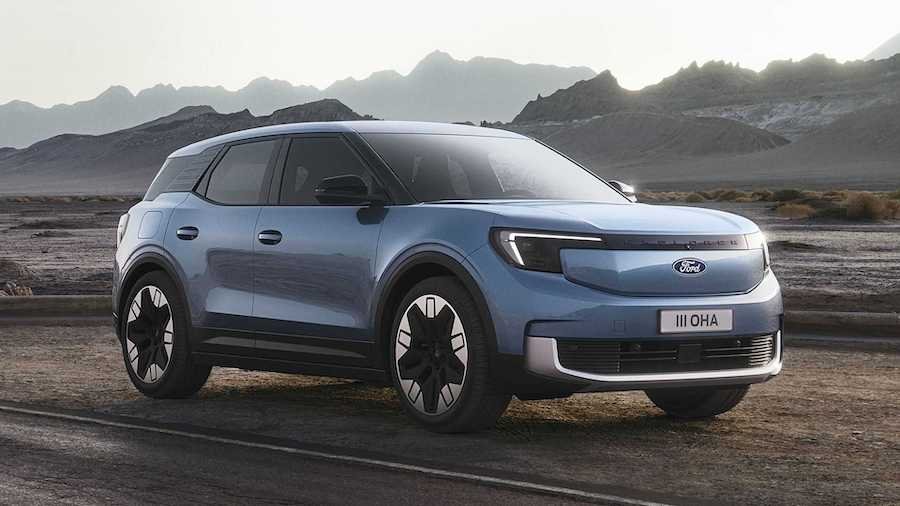In February 2021, Ford announced plans to sell only electric passenger cars in Europe from 2030. However, the slower-than-expected adoption of EVs is forcing the company to revise its initial plan. The new strategy doesn't rule out selling vehicles with combustion engines into the next decade should there be enough demand.
Automotive News Europe cites Ford of Europe's General Manager Martin Sander saying ICE could live to see the 2030s: "If we see strong demand, for instance for plug-in hybrid vehicles, we will offer them." Speaking in London this week at the Financial Times Future of the Car summit, the head honcho admitted demand for EVs has been "softer" than originally estimated by Ford.
Ford has been preparing for an all-electric passenger car lineup in recent years. It shockingly ended production of the Mondeo on April 4, 2022, at the plant in Valencia, Spain. The EcoSport was phased out in December 2022 from the Craiova factory in Romania. The company also killed the Fiesta on July 7, 2023, at its site in Cologne, Germany. The S-Max/Galaxy minivan bid adieu in April 2023 when the last units were produced at the Almussafes factory in Valencia.
Next year, the last Focus will roll off the assembly line in Saarlouis, Germany. Earlier this month, Martin Sander told Autocar the decision to discontinue the Focus in 2025 is final. Meanwhile, the former star of Ford's lineup is on life support in three body styles: hatchback, sedan, and wagon.
How is Ford filling these holes in its decimated European lineup? A fully electric version of the Puma subcompact crossover is debuting later this year. The Puma Gen-E will be assembled at the firm's Craiova plant in Romania. A zero-emission Explorer on Volkswagen's MEB platform will enter production in June at the Cologne plant.
Pictured here, the electric SUV's rollout was delayed due to the adoption of a new European standard for electric vehicles (UN Regulation 100.3/ ECE-R 100.3). A second Ford EV on the platform that has underpinned vehicles such as the VW ID.4 will premiere sometime next month. It could be a badge-engineered ID.5 with a rakish roofline and might revive the "Capri" moniker.
Archrivals are doing things differently in Europe. The Volkswagen Group still has plenty of ICE cars, as small as the Polo/Ibiza/Fabia and as large as the Passat/Superb or the Tiguan/Kodiaq, plus the fancier Touareg. Similarly, Stellantis offers a multitude of models with combustion engines, from a 208/Corsa supermini to the mid-size 508 liftback/wagon, with lots of crossovers and SUVs in between.
Some brands are still even selling A-segment cars, with relevant examples being the Toyota Aygo, Hyundai i10, and the Kia Picanto. Ford used to have a car in this class as well but the Ka+ was axed in September 2019. Yes, yet another model it phased out in Europe. The US lineup has been simplified as well considering the Fiesta, Focus, and Fusion are long gone.
Ford has taken a huge risk by axing some of its most important nameplates, hoping EVs would catch on. Demand for electric cars is cooling down, which raises concerns about the bet made by the company. Competitors have not retired their traditional cars, so people in the market for a gas-powered vehicle still have plenty of choices.
Where does that leave Ford? The Puma and Kuga (Escape in the US) are popular products, but there are lots of people interested in hatchbacks, sedans, and wagons. These customers will just have to look elsewhere.
Related News

